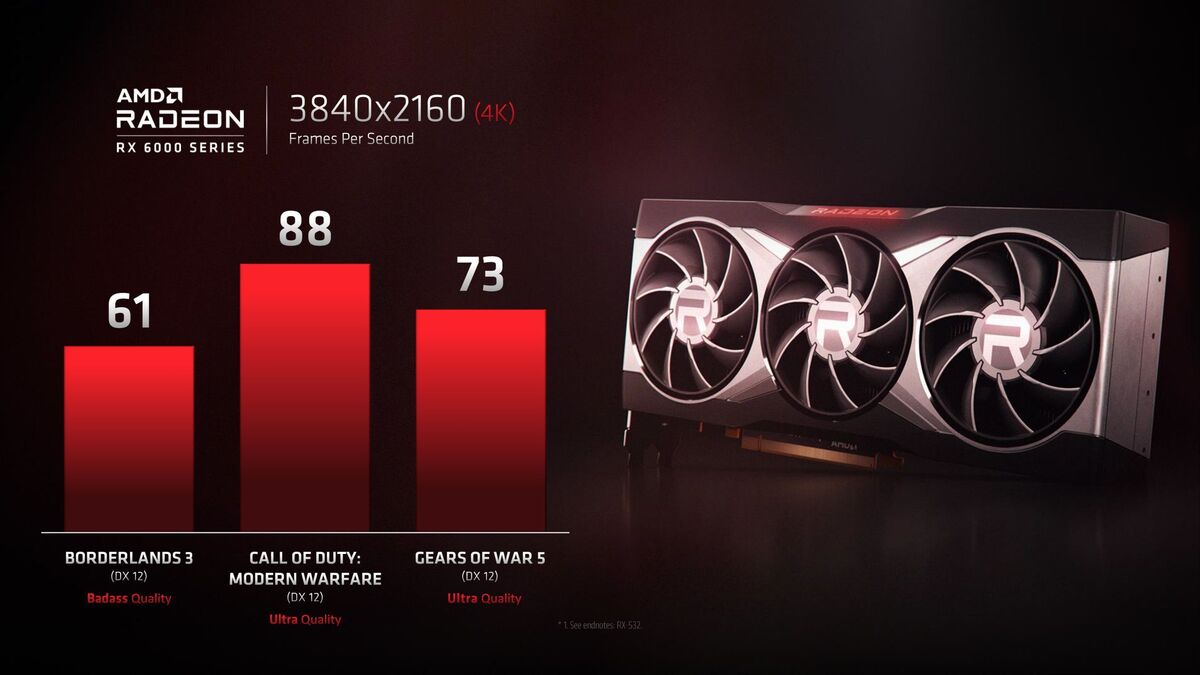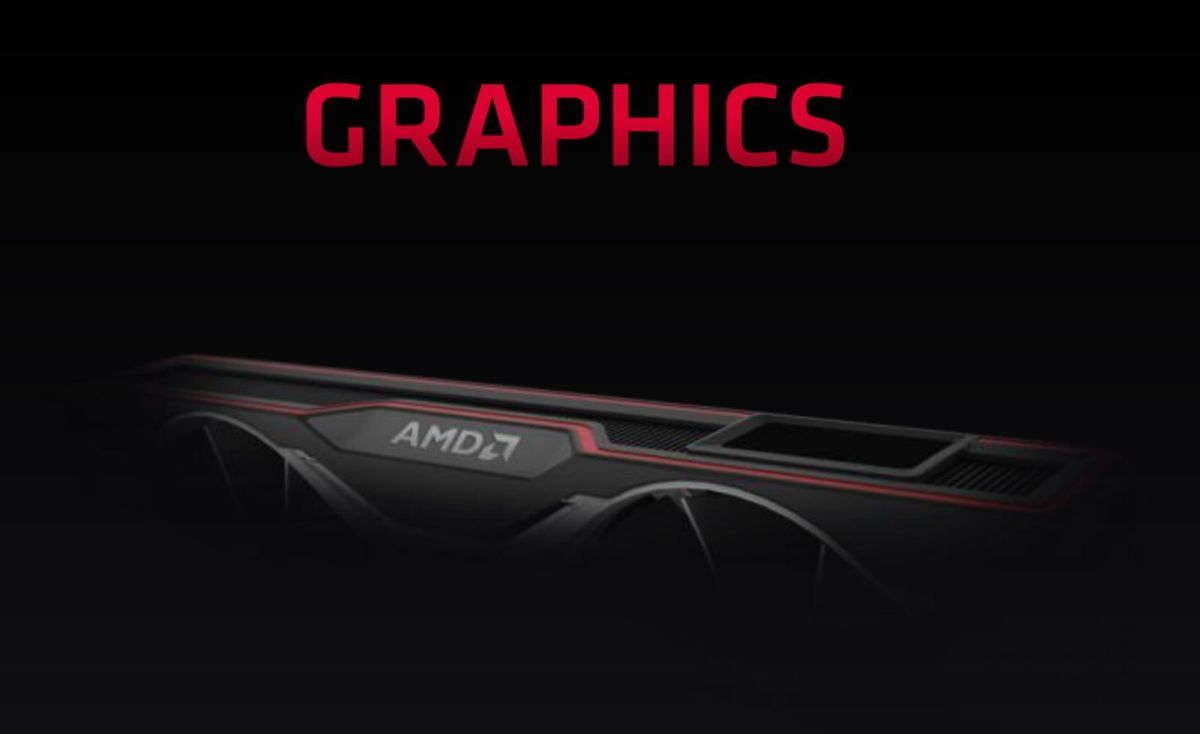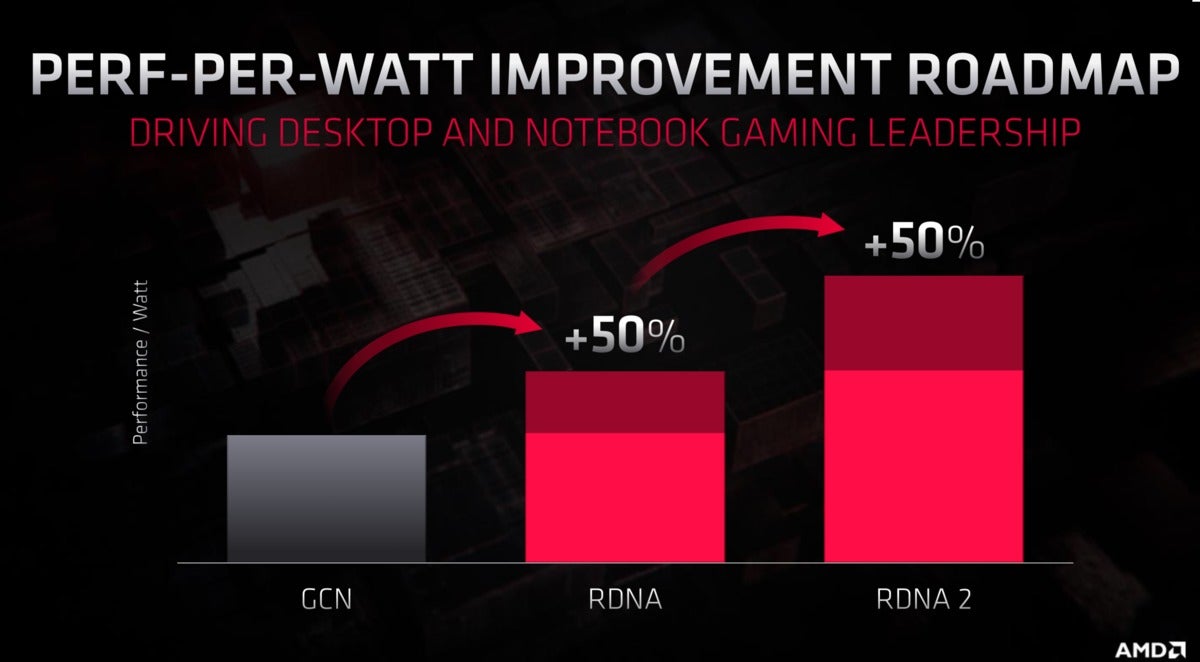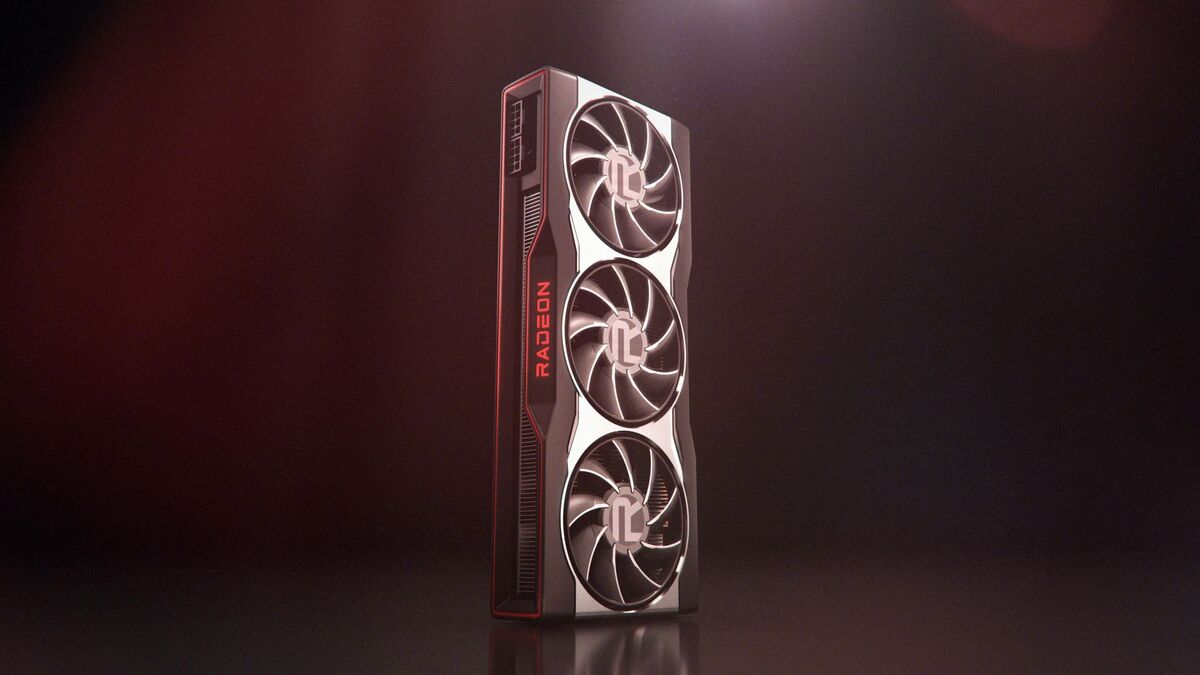AMD’s Radeon RX 6000 ‘Big Navi’ performance tease reveals an RTX 3080 rival - strainhusafter1999

AMD
Today's AMD event may get been Zen 3's boastful reveal, but the company tossed a juicy boney to the Radeon true to, too. After announcing the brutish Ryzen 9 5900X (among others), CEO Lisa Su past showed off gameplay footage of Borderlands 3 run on the CPU at 4K resolution with an undisclosed Radeon RX 6000-serial nontextual matter visiting card. And yes, Internet, AMD's "Big Navi" goes toe-to-toe even with Nvidia's brutally firm GeForce RTX 3080.
The mysterious Radeon RX 6000 GPU averaged 61 frames per minute even with the game running on its punishing "Badass" performance preset. (Borderlands 3 is an AMD-partnered title.) Su also disclosed that the Ryzen/Radeon combo hit 88 fps in Call of Duty: Contemporary Warfare (an Nvidia-partnered title) and 73 fps in Gears 5 on Radical visual presets. AMD plans to denote the Radeon RX 6000-series "Handsome Navi" graphics cards formally on October 28 in a dedicated event.
In a call ahead the Acid 3 result, Radeon gaffer Scott Herkelman told me that AMD decided to teasing Giving Navi's performance due to residential area demand for much information. IT certainly was an oculus-opening reveal.
 AMD
AMD That's fast.
Hexus tested the $700 GeForce RTX 3080 in Gears 5 and Borderlands 3 using the same visual presets American Samoa AMD did with this Radeon RX 6000 preview, on AMD's Ryzen 9 3950X. The RTX 3080 hit 59.4fps inBorderlands 3, compared to the Radeon RX 6000's 61fps in this preview. InGears 5, the RTX 3080 hit 77fps, compared to the Radeon RX 6000's 73fps. The mainframe makes a difference, though, because in Eurogamer's GeForce RTX 3080 recap with a Core i9-10900K, Nvidia's card hit 65fps in Borderlands, and 80fps in Gears 5. (TheCall of Duty game lacks a standardized benchmark, so you can't equivalence AMD's results against opposite tests, as two wildly different scenes could be used.)
That seemingly puts AMD's upcoming card neck-and-neck with Nvidia's staggeringly influential gaming flagship, contingent on the processor it's paired with. That's damned impressive—simply it's important to understand what AMD didn't discover today, too.
Dissecting the AMD vs. Nvidia chess game match
Most importantly, Herkelman stressed that AMD didn't Department of State which Radeon RX 6000 graphics card ran these benchmarks. We don't know whether these results come from the biggest Big Navi GPU, or a much modest offering. (Herkelman also aforesaid there's still fine-tuning socialist to do before launch.) AMD's Ryzen 9 5900X, the CPU used for the tease, also hasn't been tested by independent reviewers.
Processors largely aren't a performance clipper at lofty 4K resolutions, merely as we showed earlier, they can affect operation results. That means that pitting AMD's benchmarks against Hexus and Eurogamer's is not a straightforward apples-to-apples compare. It's as wel worth noting that every last three games that Su showed off in the Radeon RX 6000 teaser run connected DirectX 12, rather than the more common DX11 graphics API.
While this could be a best-case showing for AMD's future graphics cards, IT could also be AMD's sly attempt to set the stage with a first-case viewing for Nvidia's rival RTX 3080.
 AMD
AMD Nvidia's new "Ampere" GPU architecture inside the RTX 30-series delivers its trump functioning in modern APIs like DirectX 12 and Vulkan. Ampere also scales first-rate at ultra-high resolutions, where the maniac number of shader cores inside these GPUs can flex their muscles without existence constrained by else parts of the architecture. (Perhaps that's why Nvidia selling focused on 8K gaming performance with the GeForce RTX 3090.) The RTX 3080's gains over last multiplication's RTX 2080 Ti slim down importantly when you move down to 1440p resolving, as our own RTX 3080 review benchmarks showed, and Hardware Unboxed aptly explained. Different parts of Ampere become the bottleneck below 4K.
There's plenty of way for AMD to maneuver here. Radeon RX 6000 GPUs are built using RDNA 2, the second propagation of the RDNA art architecture that debuted in the (fantastic) Radeon RX 5700-series. First-gen RDNA GPUs delivered stunning efficiency gains that finally order Radeon artwork cards on a par with GeForce's then-vaunted index efficiency, but AMD never launched a consumer graphics card with a large RDNA 1 die, or really-time shaft tracing capabilities.
RDNA 2—whose high-remnant iterations have been informally dubbed "Big Navi"—addresses both of those, on teetotum of delivering another 50 percent performance-per-watt increase, AMD says. AMD already confirmed that the recent graphics card game will as wel living real-sentence ray tracing, just like the next-gen Xbox Series X and PlayStation 5 consoles also built with RDNA 2.
 AMD
AMD How Radeon RX 6000 nontextual matter card game handle period of time beam trace will matter. Nvidia's RTX GPUs render the effortful fashionable lighting technology by offloading a lot of the forg to sacred hardware—RT cores that calculate bouncy casual rays, and tensor cores that "denoise" the net see. That specialized hardware takes cherished die space within Ampere. Microsoft already habitual that the AMD chip inside the Xbox Serial X will also use some rather computer hardware acceleration for irradiate tracing, merely the specifics volition make a difference in the PC version of RDNA 2.
If AMD's ray tracing result doesn't take as much on-die space as Nvidia's, that leaves the Radeon cards more board to cram in time-honored rendering computer hardware—shaders, ROPs, geometry pipelines, et cetera. And if AMD can indeed load up Big Navi with more of that traditional hardware—particularly now that CDNA's reaching means AMD can jettison compute-specific extras from RDNA to focus squarely on gaming—IT could indeed potentially bring a big struggle to Nvidia, and possibly even more so at the more common resolutions, where Amp's scaling isn't quite an as potent.
Or maybe not. We won't know for sure until Radeon RX 6000 graphics cards are actually in our hands. These first 4K numbers from AMD look very promising, though.
 AMD Radeon
AMD Radeon Enough game theory. You've been asking to see how well Generous Navi hangs with Nvidia's GeForce RTX 3080, and AMD delivered Radeon RX 6000 benchmarks today. Big Navi looks beautiful monstrous, furthest more capable than anything Radeon has delivered in recent memory, and potentially just as fast as Nvidia's new gaming champion. But directly that we've seen close to numbers, we're left with far more questions than before. One thing is certain though: Given Nvidia's on-going stock woes with the RTX 3080 and 3090, AMD just gave disappointed enthusiasts a good reason to hold back and see what Radeon RX 6000 art cards are capable of.
Once again, anticipate the full Radeon RX 6000 display on October 28, complete with a new-look triple-fan cooling solution.
Note: When you purchase something after clicking links in our articles, we may earn a petite commission. Study our affiliate link insurance policy for more inside information.
Brad Chacos spends his days dig through desktop PCs and tweeting too much.
Source: https://www.pcworld.com/article/393618/amd-radeon-rx-6000-big-navi-performance-tease-rtx-3080.html
Posted by: strainhusafter1999.blogspot.com

0 Response to "AMD’s Radeon RX 6000 ‘Big Navi’ performance tease reveals an RTX 3080 rival - strainhusafter1999"
Post a Comment